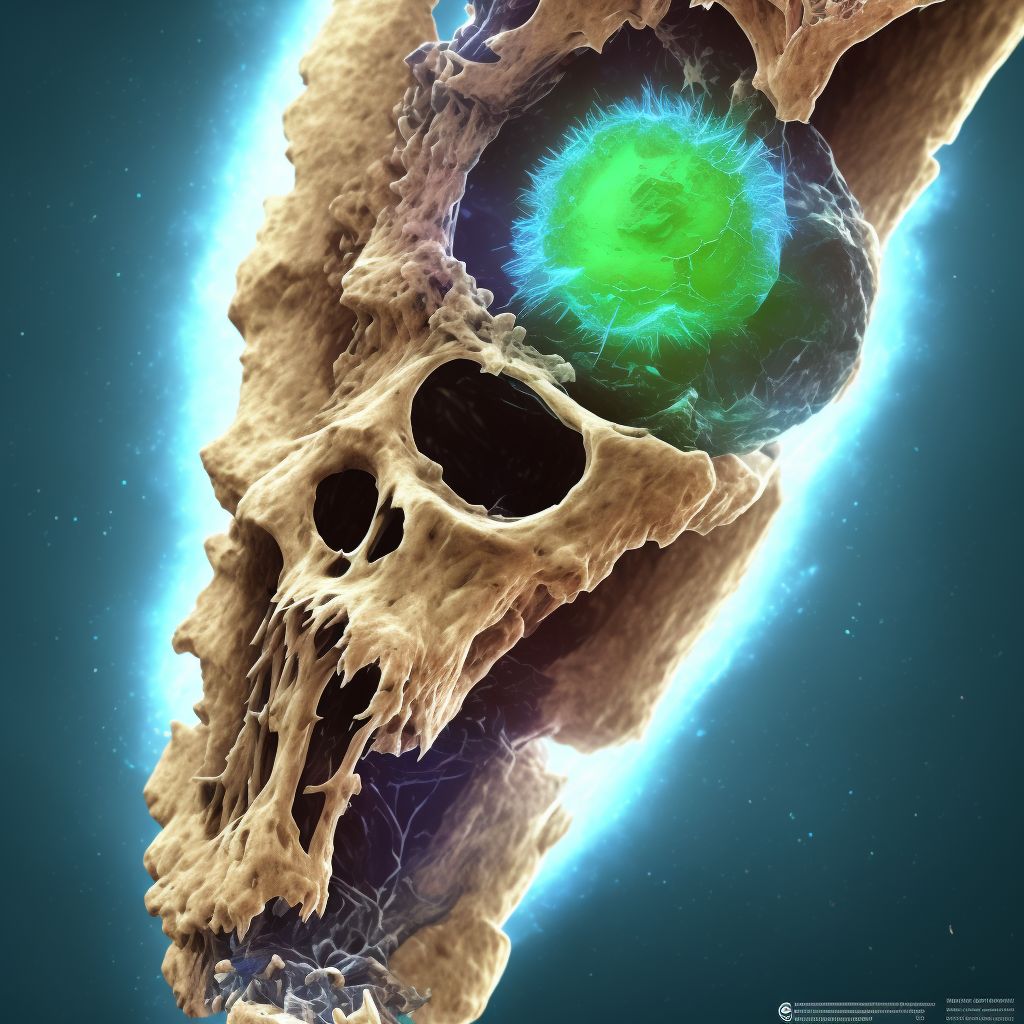
Displaced transverse fracture of shaft of left tibia, subsequent encounter for closed fracture with nonunion Save
ICD-10 code: S82.222K
Disease category: S82.222: Displaced transverse fracture of shaft of left tibia
Displaced Transverse Fracture of Shaft of Left Tibia: Understanding Nonunion
When it comes to fractures, the displaced transverse fracture of the shaft of the left tibia is a fairly common injury. One possible complication that can arise from this type of fracture is nonunion, which refers to the failure of the fractured bone to heal properly.
Nonunion occurs when the fractured bone fails to heal within the expected time frame, typically extending beyond six to nine months. This complication can be caused by various factors, including poor blood supply to the fractured area, infection, inadequate immobilization, or excessive movement during the healing process.
Nonunion is typically diagnosed through a combination of physical examination, X-rays, and other imaging tests. It is crucial to identify nonunion early on, as it can lead to persistent pain, limited mobility, and decreased quality of life for the patient.
Patients who have suffered a displaced transverse fracture of the shaft of the left tibia and are experiencing nonunion often require subsequent encounters with healthcare professionals. These encounters involve ongoing monitoring and evaluation of the fracture site to assess the progress of healing.
During subsequent encounters, healthcare professionals may perform regular X-rays to track the healing progress and identify any potential complications. Other diagnostic tests, such as magnetic resonance imaging (MRI) or computed tomography (CT) scans, may also be employed to gain a more detailed understanding of the nonunion and its causes.
Additionally, healthcare providers may recommend various treatment approaches during subsequent encounters to promote healing and address the nonunion. These treatments can include bone stimulation techniques, surgical interventions, or the use of external fixation devices.
- Regular monitoring of the fracture site
- X-rays to assess healing progress
- Diagnostic tests like MRI or CT scans
- Bone stimulation techniques
- Surgical interventions
- External fixation devices
It is important for patients with a displaced transverse fracture of the shaft of the left tibia to be aware of the potential complication of nonunion. Seeking prompt medical attention and following the recommended treatment plan can significantly increase the chances of successful healing and minimize the risk of long-term complications.
If you have recently experienced a displaced transverse fracture of the shaft of the left tibia and suspect nonunion, it is essential to consult with a healthcare professional for an accurate diagnosis and appropriate management.
Treatment of Displaced transverse fracture of shaft of left tibia, subsequent encounter for closed fracture with nonunion:
Treatment Options for Displaced Transverse Fracture of Shaft of Left Tibia, Subsequent Encounter for Closed Fracture with Nonunion
A displaced transverse fracture of the shaft of the left tibia can be a challenging injury to treat. When this fracture does not heal properly, it is referred to as a nonunion. In such cases, subsequent encounters are necessary to address the issue and ...
To see full information about treatment please Sign up or Log in